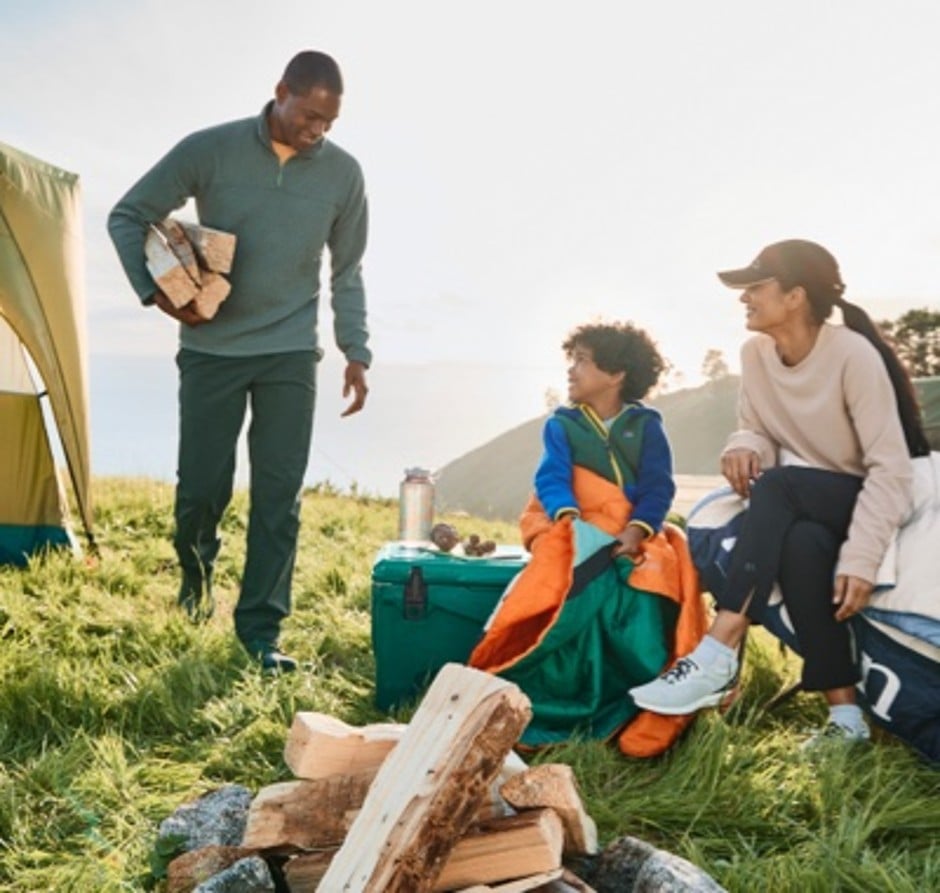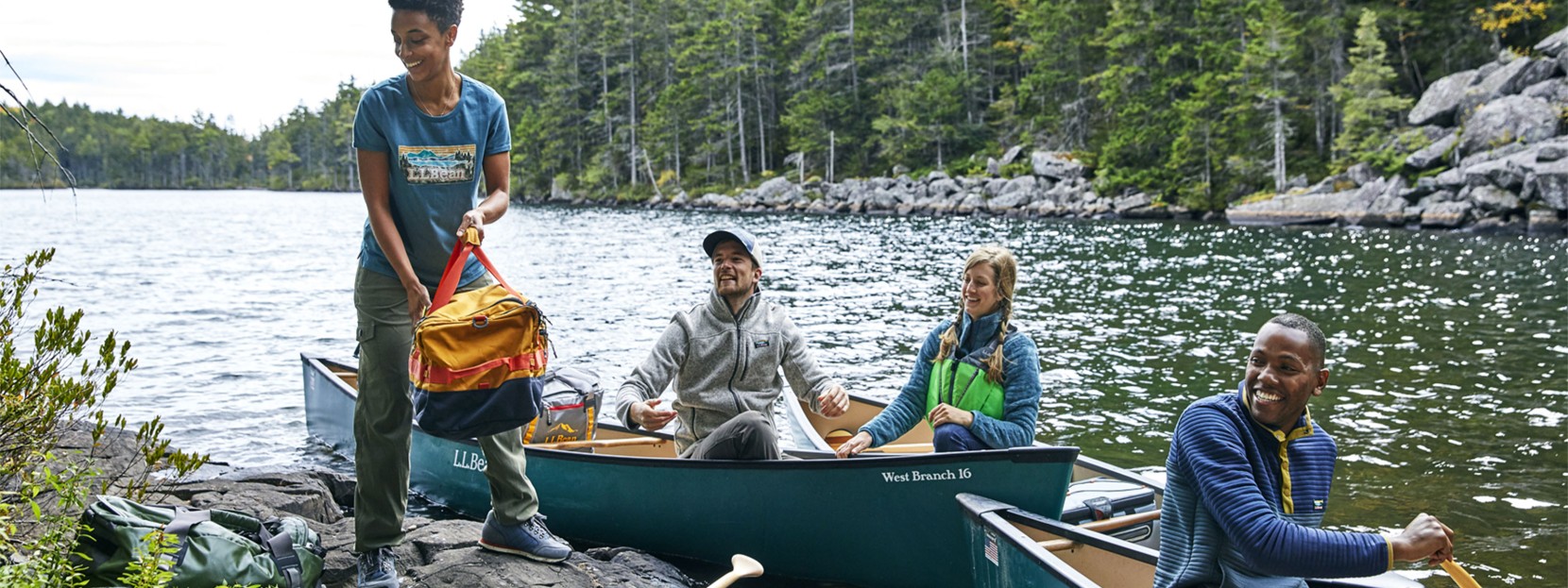
1. What do you need for paddling gear?
The main difference between the boat you need for short recreational excursions and one for overnight trips is storage space. You might need a day pack and some snacks for a few hours on the water, but you need room for shelter, food, clothing and gear for a camping trip.
You can go paddle camping in a canoe or a touring kayak; canoes offer more storage space, while touring kayaks are designed for longer trips on open water.
Safety
One thing you don’t need for backpacking but definitely do need for paddling is a PFD – you should always wear one when you’re out on the water, and keep a whistle attached to it in case you need to call for help. In addition, you should have a first aid kit tucked in your bag or boat, just like you would for a day hike or camping trip. Finally, beyond your equipment, make sure you have the skills for the waters you’re paddling, including knowing what to do in case of a capsize.
Dry Storage
Whether you’re in a kayak with bulkhead storage or an open canoe, you shouldn’t depend on fair weather and stable paddling to keep everything dry. Always store things that you’d rather not get wet in a dry bag or box.
2. What do you need for camping gear?
Once your vessel is squared away, it’s time to assemble everything you need for your campsite. Your exact needs will vary depending on where you’re going, the length of your trip and the size of your party, but in general you’ll want gear and supplies that are lightweight and space efficient.
Shelter
Backpacking tents are ideal for kayak and canoe camping, since they’re light and designed to take up very little space in your pack (or in this case, your boat). In a canoe, you may be able to get away with a larger car camping tent; just remember that every bit of space used for the tent is space you can’t use for something else.
Sleeping Bag and Mat
For a sleeping bag and mat, gear designed for backpacking is again your best friend. In colder weather, a down or synthetic sleeping bag is super-compressible; something rated 30° to 50° is great for summer, while 10° to 30° is perfect for cooler weather. And make sure you pack your sleeping bag in a dry bag, because nothing is worse than crawling into a wet sleeping bag at the end of the day.
Camp Kitchen
You may not be able to have a campfire to cook over, so you may need to bring a stove and fuel. There are many options for small single burner stoves to choose from, and propane or butane fuel come in lightweight containers. A good rule of thumb is to always take a little more fuel than you think you’ll need – just in case.
Food and Water
If you’re packing out food for your trip, lightweight and space-saving is again the name of the game. Dehydrated meals have improved drastically over the years, and pack down easily; classics like bread, pasta and cold cuts also travel well. One well-placed insulated cooler in your canoe or kayak can be packed with more than enough essentials to last a night or two.
If you’re feeling lucky, bring along a fishing pole and cast a line for your dinner – just make sure you have the proper license for fishing at your destination and a back-up plan for a meal.
Even though you’ll be surrounded by water for most of your trip, you’ll want to bring along fresh, potable water, both for staying hydrated while paddling and so it’s ready at hand when you’re at camp. In addition, water purification tablets or a filtering water bottle or water purification pump are good ways to get clean water without having to boil it.
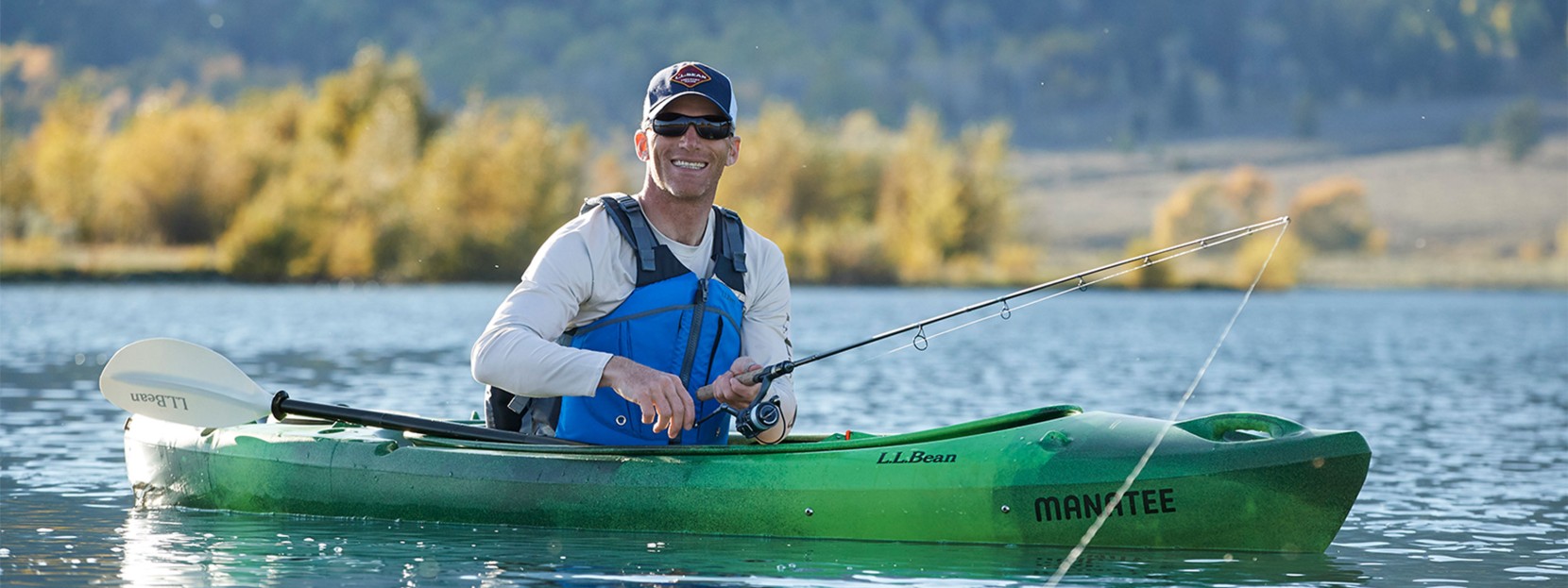
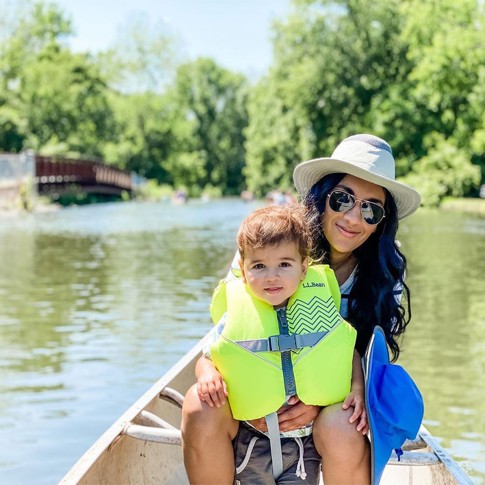
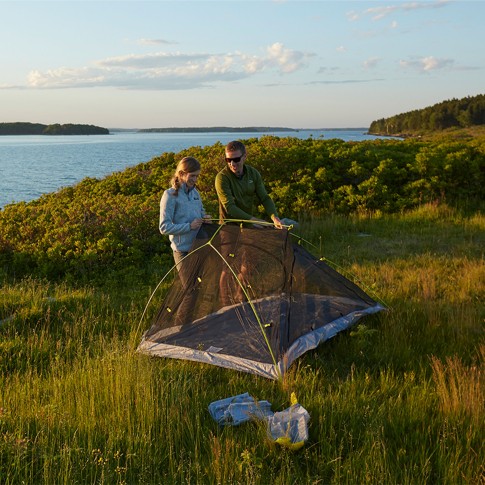
3. How do you pack your boat?
For fans of puzzles, fitting all this gear in a small space is a fun challenge. But if getting everything packed leaves you scratching your head, don’t sweat getting everything perfectly compact; just keep an eye on these simple considerations to make sure everything stays put.
Weight Distribution
In a kayak or a canoe, it’s important to consider the weight distribution of your gear and your paddlers. The goal is to have a properly “trimmed boat” – a boat that sits level on the water when fully loaded. Put your heavier items toward the middle of the boat, or try and have an equal amount of weight in the front and back halves of the boat. Otherwise, the bow or stern will sit higher in the water, which makes it harder to handle.
Avoid Overloading
While both kayaks and canoes can carry a lot of gear, you don’t want to overload them. Try to limit yourself to gear that fits inside the boat, instead of strapping gear to the deck of your kayak or stacking it high in your canoe. Limiting your gear in this way reduces your overall surface area, which is helpful for boat handling in windy conditions. By keeping your boat’s center of mass closer to the water, the boat is less top-heavy and less likely to capsize.
4. Where are you going?
You have your boat, you have your gear – now you just need to decide where you’re going to go. It’s best to start simple, with a short paddle to an overnight stay, before you head out on multi-day journeys. Many states have protected waterways or islands where camping is allowed. Always plan ahead and check local weather forecasts and regulations before you head out. And be sure to tell family or friends your plan for the trip, so somebody knows where you’re going and when you should return.



